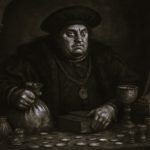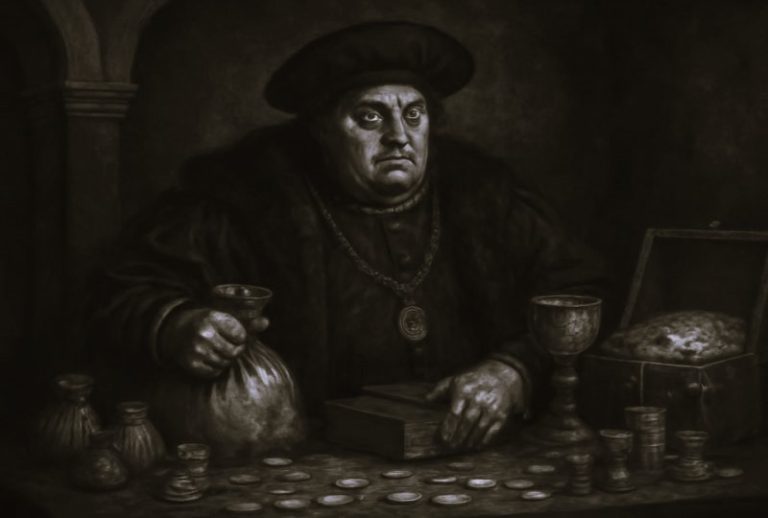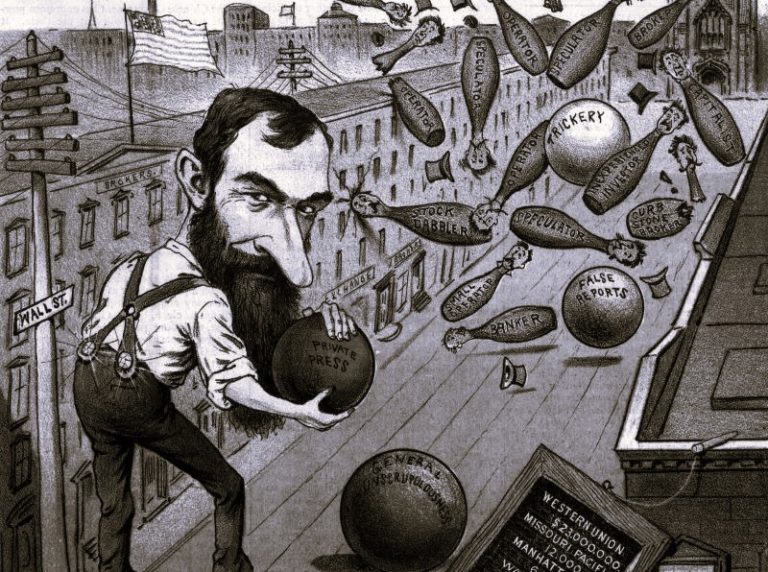

Tsar Nicholas II, the last of the Romanovs, was a bloodless non-entity riddled with prejudice and superstition.

By Dr. Neil Faulkner
Late Research Fellow
University of Bristol
Introduction
The war was going badly, so the Tsar, the supreme ruler of 130 million Russians, had gone to the front to assume personal command. ‘A new page begins, and only God Almighty knows what will be written on it’, he announced. The Tsarina, who had stayed behind at the palace, wrote reassuringly: ‘It will be a glorious page in your reign and Russian history.’ He had nothing to fear, she added, because ‘Our Friend’s prayers arise night and day for you to Heaven, and God will hear them.’ She reminded him that he had been supplied with a holy icon by this ‘Friend’ before setting out – ‘to guard and guide you’ – and later she sent an apple from the hands of the same, one Grigori Rasputin, a Siberian peasant faith-healer, urging her husband to eat it to strengthen his will. Rasputin was a drunkard, a lecher, and a charlatan. With a display of piety and a claim that he could cure her son’s haemophilia, he had insinuated his way into the Court and become the Tsarina’s closest advisor.1
When did this happen? A monarch going to war waving holy icons and eating sacred apples. Not in the twelfth century, but at the beginning of the twentieth.
Tsar Nicholas II, the last of the Romanovs, was a bloodless non-entity riddled with prejudice and superstition, a weak man paralysed by his own stupidity as the fires of war and revolution rose around him. His German wife, the Tsarina Alexandra, was equally benighted and gullible, yet more wilful. Men of talent were dismissed from Court and their places taken by fawning favourites, the appointees of the Alexandra/Rasputin clique, what one former minister called ‘the leprous court camarilla’. In the shallow mind of the Tsarina, this was interpreted as strength. ‘Being firm is the only saving’, she told the Tsar. ‘You are autocrat and they dare not forget it.’ He was to ‘crush them all’, for he was ‘the autocrat without which Russia cannot exist’. As this German aristocrat in a Russian palace explained it: ‘Russia loves to feel the whip. That is her nature. Tender love, and then the iron hand to punish and guide.’2 Thus did the last of the Romanovs meet the challenges of a world of railways, steelworks, and howitzers: with the barbarism of the Middle Ages.
How to explain this travesty? Georgi Plekhanov, the founder of the Russian socialist movement in the late nineteenth century, considered Russia ‘too Europeanised in comparison with Asia, and inadequately Europeanised in comparison with Europe’.3 It was, he implied, an historical hybrid which had entered the industrial age still saddled with an absolute monarch and a state-feudal social structure inherited from the sixteenth century.
To understand the revolution that exploded inside Russia in 1917, we must begin with a ‘deep time’ perspective – a sense, that is, of what the French historians of the Annales tradition call la longue durée. If revolution is ‘compressed’ history – the progress of a century becoming the achievement of a year – it becomes so only because long-accumulating contradictions have reached a critical mass.
The autocratic rule of the Tsars – and the militaristic manner in which Russia came to be ordered – was the result of the interaction of three factors: the backwardness of the economy; the weakness of civil society; and competition with rival powers. Let us consider this interaction in detail, for it provides the seed-bed of the revolutionary crisis to come.
Old Russia

Tsarist Russia eventually comprised a vast territory of diverse geography, multiple ethnicities, and only the most rudimentary communications. It stretched from Poland and the Baltic Sea in the west to the Pacific Ocean in the east, from the icebound wastes of the Arctic in the north to the baking steppes of Central Asia in the south. The continental climate – cold in winter, hot in summer – was harsh. Great tracts of the country – the frozen tundra and taiga forest of the north – remained uncultivated wilderness. Much of the rest was poor land. The belt in which Moscow stands, the historic heart of Old Russia, where the taiga grades into mixed forest, is a region of sand and clay, bogs and marshes, with acidic soils low in humus. Further south again, where the woodland opens into vast expanses of steppe, lies the ‘black earth’ region, where the soil is better, but agriculture is hampered by unreliable rainfall, a short growing season, and, in the past, primitive technique.
Because land was plentiful but poor, Russian agriculture developed extensively: peasant pioneers from the old regions would trek into the wilderness to hack out new farms in successive waves of colonisation. Low yields also encouraged diversification: agriculture was supplemented by fur-trapping, fishing, bee-keeping, and cottage industries producing tools, household goods, clothes, icons, even musical instruments. Village people might be poor, but they were fairly self-sufficient.
This, combined with distance and lack of easy transport, meant that trade and towns were little developed. Most Russians lived in relative isolation. Civil society remained fragmented and unorganised.4 The yeomanry and ‘mechanicals’, the merchant-adventurers and industrial entrepreneurs, the classes of men that had pioneered the development of capitalism in north-west Europe between the sixteenth and eighteenth centuries, were largely absent in Old Russia. ‘The meagreness not only of Russian feudalism, but of all the old Russian history,’ wrote Leon Trotsky, who was both leader and historian of the Russian Revolution, ‘finds its most depressing expression in the absence of real medieval cities as centres of commerce and craft.’5
The extreme centralisation of the Tsarist state was the flipside of Russian society’s atomisation. The autocracy of the Tsar was made possible by the stagnation of urban life, the absence of culture, the void where strong public institutions had failed to develop. But instead of offering a paternal hand, Tsarism was like a brutal rider forcing forwards an overburdened mule; the state followed its own independent historical path, regarding the inert mass of humanity over which it presided as mere raw material for fashioning into a military machine. Under the pressure of geopolitical competition with rival powers, the Tsarist state became an end in itself. Its inner essence was politico-military accumulation: the amassing of manpower and military hardware as a means of empire-building. The Tsar did not exist to serve the people; they existed to serve him.
The last Tsar, Nicholas II, clung to this principle to the very end. With discontent rising all around him, isolated even within the Court itself, the British ambassador, Sir George Buchanan, asked the Tsar in late 1916 whether he should not make some effort to regain the confidence of his people. There was a long pause. Then Nicholas Romanov replied: ‘Do you mean that I am to regain the confidence of my people, or that they are to regain my confidence.’6
Because of primitive technique, rural poverty, and medieval infrastructure, only a regime of exceptional ruthlessness could accumulate the resources necessary to sustain the apparatus of global power. Russia’s engine of war was fuelled by peasant muscle and blood. The method of extraction, from a hundred thousand villages spread across 5,000 miles, was necessarily crude and brutal.
The combination of backwardness and militarism gave to the Tsarist autocracy what Georgi Plekhanov and other contemporary Marxists considered an ‘Asiatic’ character. Russian history knew no Reformation, barely any Enlight-enment, and only a most belated Industrial Revolution. Nothing compared with the Dutch, English, American, or French Revolutions. And in that great ‘Springtime of Peoples’ in 1848 – a rolling wave of popular insurrection sweeping through Paris, Berlin, Vienna, Budapest, and Rome – the Tsar, stepping forth as ‘gendarme of Europe’, employed his servile peasant-conscripts to shoot down the democratic revolution-aries on the barricades.
Militarism

The Russian tsars inherited much of their historic character from the Mongol khans. In the early thirteenth century, the Mongols had thundered across the steppes to create an empire that stretched the length of Asia. When their empire broke up in the later thirteenth century, a Mongol-Tartar (or Mongol-Turkic) khanate known as ‘the Golden Horde’ emerged in the north-western region of Central Asia. The princes of Moscow – protected somewhat by their location deep within the Russian hinterland, and enriched by the trade lines that ran through their territory – maintained a precarious semi-independence on the borders of the Golden Horde through craven submission to their Tartar overlords, serving them, in Marx’s words, as ‘hangman, sycophant, and slave-in-chief ’. Then, as Tartar power waned, the princes of Moscow – formed in a mould of ‘Asiatic’ despotism, imbued with the instincts of the bully and the barbarian – took stage as masters in their own right.7
Landlocked, without defensible ‘natural frontiers’, surrounded by enemies, the embryonic state of Muscovy was compelled to fight for survival – and, eventually, supremacy – against the Tartar khanates of the disintegrating Golden Horde in the south-east, the feudal kingdom of Poland-Lithuania in the west, and the mercantile city-state of Novgorod in the north. The creation of a national state was mainly the work of Ivan the Great (1462–1505). During his reign, and that of his son, the territory of Muscovy increased six-fold. As it grew, a new class of dependent feudal landowners was created, men who held estates in return for service.8 Yet greater conquests followed.
Ivan the Terrible (1533–84) was the first Muscovite ruler to proclaim himself Tsar (‘Caesar’). So feared was he by his own people that they tolled the church bells to warn of his approach. A mentally deranged tyrant, he used mass murder to create a centralised royal dictatorship and double the size of Muscovy from 2.8 to 5.4 million square miles. Novgorod lost its independence. Rival Slavic princes were struck down. And, equipped with cannon, muskets, and holy icons, the Orthodox Christian soldiers of the Tsar dispersed the Islamic horse-archers of the Golden Horde to push the boundaries of the state to the Ural Mountains and the Caspian Sea.
To support these wars of conquest, Ivan turned Muscovy into a military camp. The private estates of the boyars – the landowning nobility – were expropriated and became the personal property of the ruler. The Tsar was elevated into both proprietor and sovereign of a ‘patrimonial’ state. The nobility was organised into a service class of government officials and army officers. The peasantry, by legal diktat, lost its freedom and was reduced to serfdom, tied to the land and in thrall to the landlord, the tax-collector, and the recruiting sergeant. The towns, too, succumbed to the rising power of the autocracy. Novgorod was destroyed in 1570, its medieval timber buildings consumed by fire, its people hunted down and massacred in a bloody rampage that lasted for weeks.9
The terror almost brought matters to naught. The monstrous excesses of Ivan the Terrible provoked violent reaction after his death, a ‘Time of Troubles’, when usurpers and adventurers contested a vacant throne, popular rebels seized much of the countryside, and towns were sacked and villages burned by military freebooters. As Russia disintegrated internally, the Swedes took Novgorod, the Poles Moscow.
But as so often in its history when violated by foreign invasion, Russia found within itself unsuspected reserves of strength. Behind the banners and icons of Orthodoxy, an army of liberation was raised. The Russians recaptured Moscow. Then a great assembly – the Zemski Sobor – was summoned to the Kremlin, and this, on 21 February 1613, proclaimed Michael Romanov the Tsar. The new dynasty would last for slightly more than 300 years.10
The rule of the Romanovs was based on the goon and the priest. Its watchwords were Autocracy, Orthodoxy, and Nationalism. The aristocracy had become a class of state officials. The peasants were scattered and enslaved. The towns were few and small. Trade was often state-controlled. Civil society was weak, apathetic, without enterprise or self-organisation. The active forces in Russian life – the forces that imparted dynamism to its inner processes – were the Tsarist state and the threat from foreign powers. So surpluses were hoovered upwards by a process of politico-military accumulation, draining it from towns and villages, which languished at a level of development grindingly medieval.

In the mid-fifteenth century, when it was breaking free of the Golden Horde, Muscovy was about the size of Germany. By 1600, it had expanded to the size of the rest of Europe combined. By 1650, having absorbed Siberia, it was three times larger. In these two centuries, the Tsars of Russia gained territory equivalent to the size of Holland every year.11
By this time, however, parts of Europe were developing far more rapidly than Russia, and the modernisation and enlargement of the armed forces became a pressing imperative. Under Peter the Great (1682–1725), military expenditures consumed more than four-fifths of state revenue, the army swelled to a third of a million, and the state was at war every year bar one. The tax burden tripled. Conscription – of three recruits per thousand inhabitants – became an annual draft. State feudalism was bureaucratised: Tsar Peter’s ‘Table of Ranks’ set out, in the manner of an Excel spread-sheet, a new ‘Westernised’ hierarchy of ranks, duties, and privileges. St Petersburg was founded as Russia’s ‘window on the West’ – but it was done with the brutal forced-labour methods of Asiatic despotism. Tsarist Russia came to resemble a gigantic barracks, in which a military autocrat employed 100,000 landowners and 50,000 bureaucrats to tax, conscript, and police a hundred million peasants.12
In the Great Northern War (1700–21), Peter defeated Sweden, conquered the east coast of the Baltic, and turned Russia into one of Europe’s great powers. Under Catherine the Great (1762–96), Russian expansionism surged again. The Kingdom of Poland was destroyed, and Russia, Prussia, and Austria partitioned it between them. The Ottoman-Turkish Empire was rolled back, and Russia seized territory in the Balkans, the Crimea, and the Caucasus. Then, between 1812 and 1814, Russia played a central role in the defeat of Napoleonic France, helping to inaugurate 30 years of reactionary ‘throne and altar’ politics in Europe.13 Tsarist Russia henceforward formed, alongside Habsburg Austria, one of the two main pillars of conservatism on the continent. Surveying the prospects in early 1848, the young Frederick Engels declared that, in order to make the democratic revolution, it would be necessary ‘to fight the barbarian hordes of Austria and Russia’.14
Industrialism

But the military machine was obsolescent by the mid nineteenth century. When wars were mainly a matter of masses of men, dragooned into line, bludgeoned forwards, Russia was well provided. The muskets and cannon needed to equip them were easy enough to turn out. These methods won the war of 1812, and still sufficed in wars of empire against Islamic khanates and Turkic tribesmen in the Caucasus and Central Asia as late as the 1860s and 1870s. The Tsar at this time was as pre-eminent an imperialist as any, pushing Russia’s frontiers forwards until they met those of Persia, Afghanistan, and China.
But elsewhere, in conflict with other great powers, the Russian Imperial Army proved less formidable. Defeat in the Crimean War (1853–6) – fought on home territory against British and French invasion forces – revealed military weakness amounting to national crisis. Road and rail links to the front were virtually non-existent, the army’s supply-line collapsed, and tens of thousands died unnecessarily of cold, disease, and hunger. The infantry were equipped with outdated muskets, so the prevailing military doctrine still favoured the bayonet over the bullet. Many officers were ignorant, corrupt, and brutal. The rank and file were sullen, cattle-like. The army was held together by ferocious discipline. The maximum number of lashes permitted was 6,000: a death sentence several times over. Leo Tolstoy, who fought in the Crimea, wrote that ‘we have no army: we have a horde of slaves cowed by discipline, ordered about by thieves and slave-traders’.15
Reform was essential. Other parts of Europe were indus-trialising. Russia was not. The gap between the capitalist nation-states of Western Europe and the medieval empire of the Tsars was widening. By the late nineteenth century, great-power status depended on railways, howitzers, and machine-guns. To remain a great power, Russia had to have them, and that meant she had to have the coal mines, steelworks, and engineering plants to produce them. An industrial revolution had become a matter of national survival.
Lacking a sufficient stock of private capital, Russian economic development took a distinctive form. Under Sergei Witte, who held a succession of government economic posts between 1891 and 1903, the Tsarist state set about constructing an advanced military-industrial complex. As Witte complained in a confidential memorandum to the Tsar in 1899:
The economic relationship of Russia to Western Europe is precisely similar to the relationship between colonial countries and their metropolises. But … Russia is a politically independent and mighty power; it has the right and the power not to want to pay tribute forever to the economically more advanced states … Russia wishes to be a metropolis itself.
Witte saw no alternative to large-scale state investment, with high taxes and foreign loans to fund it, and a protective wall of tariffs to keep out imports.
Between 1892 and 1900, two-thirds of government spending was devoted to economic development, mainly railways, the principal driver of early twentieth-century industrialisation. The length of Russia’s railway network doubled in less than 15 years. Pig-iron production almost trebled in ten. The overall industrial growth rate in the Witte years was 8 percent per year: higher than that of any other major state at the time, and a phenomenal rate by any standards. By 1914, Russia ranked fifth in the world for industrial output, behind the US, Germany, Britain, and France, but ahead of Austria-Hungary, Italy, and Japan.
State debt spiralled, but the foreign loans to fund it poured in. French financiers in particular were more willing to lend in Russia than at home; Belgian, German, and British bankers also invested heavily. Foreigners may have supplied as much as a third of Russian capital in 1890, almost half by 1900. This flow of capital funded not only the railways and the heavy industries that supplied them – coal, iron, steel, machine-building – but other sectors too, like textiles, chemicals, oil. The number of weaving spindles in Russia, for example, increased by three-quarters between 1890 and 1900.16

Russia’s new industries were of the most advanced kind. Such large-scale investment meant big modern factories and cutting-edge technology. Russian capitalism was able to leap the early phases of industrialisation in a single bound. Thus, by 1914, whereas small enterprises of less than 100 workers still employed 35 percent of US factory workers, they employed only 18 percent of their Russian counterparts. By contrast, giant enterprises of 1,000 or more employed 18 per cent in the US and no less than 41 per cent in Russia.
These new industries were concentrated in a handful of economic zones. Two-thirds of Russia’s industrial workers were employed in just three hotspots: St Petersburg (metallurgy, machinery, armaments), Moscow (textiles, metal-processing, chemicals), and the Ukrainian Donbass (coal, iron, chemicals). Also important were Russian Poland (textiles, coal, iron, chemicals), the Urals (mining, metallurgy), and Baku (oil).17
On the other hand, the industrial sector as a whole remained relatively small; some four-fifths of Russians still worked on the land, compared with less than a third in the US. Despite the boom, Russian infrastructure and output were still dwarfed by those of Imperial Germany, the fast-rising titan of European capitalism. On the eve of war in 1914, Germany’s railway density was 30 times greater than Russia’s; even Austria-Hungary’s was 18 times greater. Early twentieth-century Tsarist Russia was a mixture of the most advanced technique and primeval backwardness: an extreme example of what Trotsky called ‘combined and uneven development’.18
It was not simply that the new industries made a contrast with a vast, languid, primitive countryside. Tradition and modernity interpenetrated everywhere; the entire social order was destabilised as market forces eroded the solidarity of the village, uprooted young peasants, and cast them into the mines, mills, and metal-works of Russia’s exploding slum-cities. The central contradiction of Tsarism – between, on the one hand, the great-power status of the regime and its geopolitical imperatives, and, on the other, the relative underdevelopment of economy, society, and culture – yawned wider as Russia commenced its belated, catch-up industrial revolution. In 1905, the contradiction exploded into crisis, as military defeat in the Far East detonated proletarian revolution in Europe.
The 1905 Revolution

Russian imperialism’s three pressure-points were the Black Sea, Central Asia, and the Far East. Pushing against the decaying Ottoman Empire, Russia’s advance in the Black Sea region had been blocked by combinations of other European powers, during both the Crimean War of 1853–6 and the Russo-Turkish War of 1877–8. The conquest of Central Asia had also come up against a barrier: here, through the nineteenth century, among the petty potentates of Persian steppes and Afghan mountains, Britain and Russia played out a diplomatic ‘Great Game’ whose outcome was stalemate. The Far East appeared to offer better prospects.
The ‘Scramble for China’ was well underway by the late nineteenth century, as rival powers hacked off chunks of the ancient empire’s territory (‘concessions’ in the diplomatic language of the time) to found a string of coastal trading ports. The magnetic pull of easy pickings in northern China drew the attention of Tsarist statesmen, and the Trans-Siberian Railway was constructed across Manchuria to Vladivostok. But the port was ice-bound three months a year and gave direct access only to the Sea of Japan, from which passage to the Pacific was through the narrow and easily defended Straits of Tsushima. The supreme prize was Port Arthur on the Liaotung Peninsula: a warm-water port on the Yellow Sea.19
But there was a rival for influence here. In the war of 1894–5, exploiting (and laying bare) China’s weakness, the Japanese had bludgeoned their way into Korea, Manchuria, and Port Arthur. At the time, the threat of combined naval action by Russia, Germany, and France had forced the Japanese to disgorge their gains. The Russians had then filled the vacuum, obtaining a lease on Port Arthur, building a rail link with the Trans-Siberian, and pushing troops into Manchuria and Korea. Meantime, the Japanese had embarked on a crash programme of ship-building. Eight years later they were ready, and on 8 February 1904 they renewed the struggle for northern China by attacking the Russian forces holding Port Arthur.20
The war was a disaster for the Russians. The Japanese forces were efficient, up-to-date, and highly motivated. They were also fully mobilised in a war fought close to home. The Russians, by contrast, could deploy only part of their strength, and had to operate at the end of a 5,000-mile railway line. Local transport and supplies were inadequate, officers corrupt and incompetent, troops badly equipped, tactics antiquated. The Siberian peasant-soldier was tough but neither resourceful nor enthusiastic. The Tsarist assumption that Japan was a second-rate Asian power turned out to be groundless. After a succession of shattering victories on land which hurled the Russians out of Port Arthur and back 250 miles north of the Yellow Sea, the Japanese annihilated the Russian Baltic Fleet – just arrived after a voyage of seven months – at the Battle of Tsushima on 27 May 1905.21 Well before this, awakened by news of defeat in the East, revolution had broken out in the West.
‘We need a small victorious war to stem the tide of revolution’, Prime Minister Plehve had announced when the war against Japan began.22 In the event, as Trotsky observed, the war ‘drastically speeded up the natural process of destruction of the autocracy’.23 Military defeat and political agitation intermeshed in the autumn of 1904 as middle-class liberals ratcheted up a campaign for constitutional reform in the face of an intransigent regime. In December came the news that Port Arthur had fallen to the Japanese. And on 9 January, the working class of St Petersburg entered the political fray. Marching from four or five assembly points in the suburbs, the workers converged on the Winter Palace in the centre of the city, perhaps 200,000 strong, the biggest demonstration in Russian history. Led by Father Gapon – a simple priest, part gullible tool of the Tsarist police, part well-meaning man of the people – they were wearing their Sunday best, singing hymns, and carrying portraits of the Tsar and icons of the Virgin. A black thronging mass standing in the snow, they had come to petition their ‘Little Father’ for redress of grievance.

Then it began: Bloody Sunday. The Cossacks – cavalry armed with carbines and sabres – charged into the crowd, hacking down men, women, and children. As people fled, they ran into rolling volleys from lines of Guardsmen. In places, the panic-stricken crowd was corralled and cut down where it stood. Elsewhere, sporadic killing spilled down the streets around the Winter Palace. No-one is sure how many died, but it was probably more than a thousand.24
The following day, 125,000 St Petersburg workers went on strike in protest at the massacre. From that moment, though it ebbed and flowed, a gigantic movement of mass strikes and demonstrations, of peasant insurrections, and of military mutinies surged across Russia. It reached its climax that autumn. For 50 days, from mid October to early December, the Tsarist capital was virtually ruled by the St Petersburg Soviet of Workers’ Deputies, a strike committee which had evolved into a revolutionary assembly representing some 200,000 workers. The regime was hammered by a mass strike in St Petersburg in October, another in November, and then armed insurrection in Moscow in early December.
But the movement could not break through, and the regime counterattacked. During October, around 3,500 people had been killed in anti-Semitic pogroms organised by the secret police and right-wing paramilitaries known as ‘Black Hundreds’. In early December, the St Petersburg Soviet was suppressed and its leaders arrested; the proletarian suburbs of Moscow were shelled and prisoners shot down in cold blood. Then, punitive expeditions were dispatched to regions of national revolt and peasant insurrection – to Poland, the Caucasus, and the Baltic provinces; to Siberia and the black-earth regions of Central and European Russia. The toll eventually reached 15,000 dead, 18,000 wounded, and 79,000 imprisoned. The retreating movement collapsed under the blows of the Tsarist terror. In 1905, there had been 24 million strike-days in Russia; by 1908, it was less than a million.25
Lenin described 1905 as Russia’s great ‘dress-rehearsal’. So it was. On the stage of war and revolution, the rottenness of Tsarism had been laid bare, and the full cast of players in the drama of its destruction had appeared – the liberal bourgeoisie, the peasantry, the workers, the soldiers and sailors, and the political parties, some revolutionary, some not so revolutionary.
Though the millions stirred into motion by the heady events of 1905 lapsed back into the apathetic routines of everyday life, they had been changed. A river of blood now divided regime and people. Never again would a working-class demonstration parade behind the symbols of Tsarism and Orthodoxy. And among the people, embedded especially in the ranks of the urban proletariat, were thousands of activists who, though demoralised and disorganised, had been transformed by the experience of 1905 into the cadre of a much more extensive revolutionary underground.
Not just a dress-rehearsal, then: also a university. And as little groups of defeated revolutionaries came together, meeting secretly in apartments in the workers’ districts, or in foreign towns where as exiles they had taken refuge, they discussed the significance of what had happened, and debated what had gone wrong.
None more so than those who called themselves ‘Social Democrats’ (though today we would call them ‘revolutionary socialists’). About two things there was wide agreement: that the St Petersburg movement had exhausted itself and subsided before the Moscow workers were fully mobilised; and that the soldiers – peasants in uniform – had remained loyal to the regime.26
Beyond this, however, the Social Democrats agreed on little. Having been welded together in the fires of 1905, they now splintered into fragments as the fires went out; and then slowly reformed around three distinct positions. The century-old riddle of Russian history – what form must the anti-Tsarist revolution take in order to be victorious? – was now reconfigured in the light of white-hot experience. The one who grasped it best – the inner dynamic of the drama-to-come as revealed in its dress-rehearsal – was the man who more than any other embodied its living spirit: the 25-year-old Jewish intellectual Leon Trotsky, the effective leader of the short-lived St Petersburg Soviet. But his was, for long, a minority voice. To understand why, we must delve deep into the murky world of Russian revolutionary politics between 1825 and 1917.
See endnotes and bibliography at source
Chapter 1 (7-26) from A People’s History of the Russian Revolution, by Neil Faulkner (Pluto Press, 03.15.2017), published by OAPEN under the terms of a Creative Commons Attribution-NonCommercial-NoDerivatives 4.0 International license.






